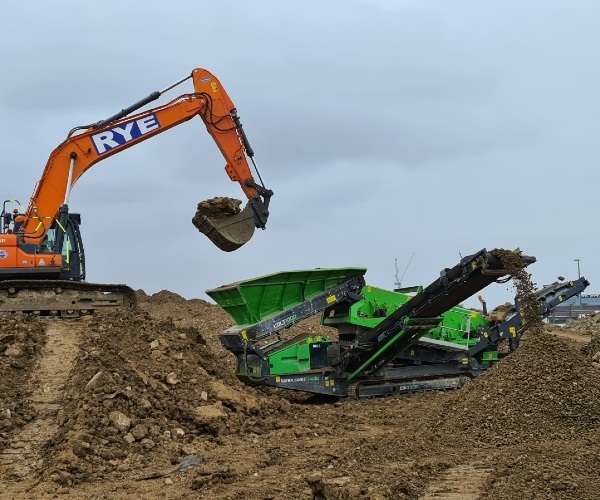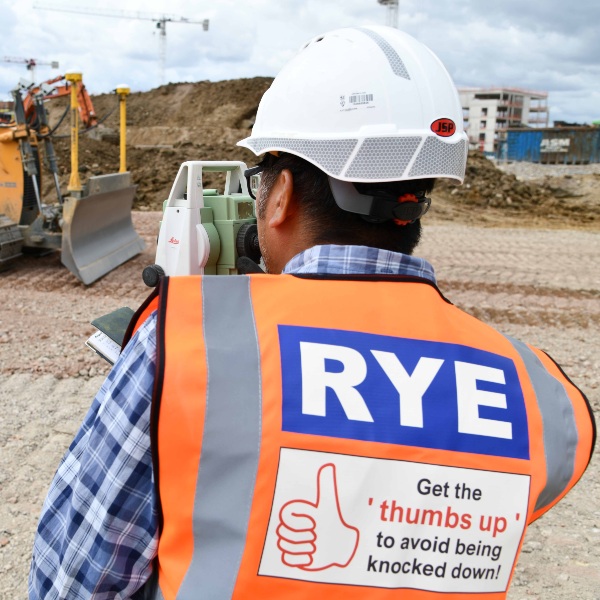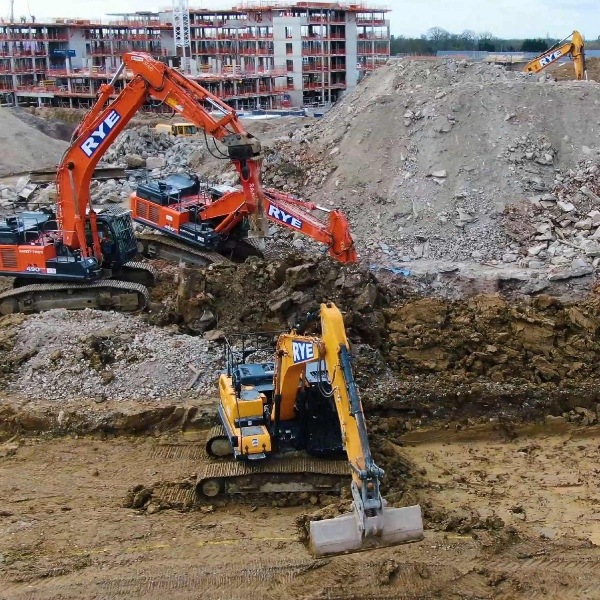Demolition - Blight or Blessing?
- 20/07/21
When watching BBC Breakfast news last week, I watched this report about the volume of demolition in the UK and questions about its sustainability.
Architect, Maria Smith, was interviewed as part of the programme and she spoke passionately about the concerns of demolishing so many buildings each year. In the UK alone, it is claimed that 50,000 buildings are brought down annually. The concerns raised were not so much related to the demolition itself, but rather posing the challenge to the design and construction industry to ensure the buildings it puts up now have their ongoing use and re-use considered. I thought this raised a few interesting points for discussion.
The need for demolition
Inevitably buildings are of their time. No matter when a design is drawn up it is based on best practice that exists at that time. Architects and builders consider the best materials available to them, based on the knowledge and capabilities available at that point. Designs and safety mechanisms are implemented according to regulations and understandings of the era.
It’s a fact of life that runs across all industries. The world, technology, knowledge…everything evolves and progresses and so there is a certain inevitability that 40, 50 or 60 years after a building is established it may not meet the expected standards of the time. Cathedrals of the middle ages were built with wooden roofs, medieval castles were built with thick stone walls and tiny windows to keep it warm, as there was no central heating. Asbestos was used as an insulator and fire-proofing material up until the 1980s…all practices that are no longer suitable.
Does this mean that every building that utilised old methods and outdated materials should be brought down? No – of course not. There does, however, need to be an understanding that, in many circumstances, retaining the existing structure when redeveloping a site is neither conducive to the objectives of the development, nor safe.

Many regenerations involve re-designing an area of a town centre to support modern ways of living; to promote improved community cohesion and provide opportunities for commerce in ways that would not have been needed in decades gone by. With a growing population and changes in shopping, socialising and working, new layouts and facilities are needed that mean old town plans and structures are no longer feasible and so demolition is sometimes the best, or only sensible, option.
In addition, it is often the case that structures are no longer safe. There may be structural issues or materials used during construction may now be considered unsafe. Wear and tear and poor maintenance, as well as inadequate utilities may lead to a building being deemed unsuitable for commercial or residential habitation. Sometimes these issues can be remedied, in other instances it may simply be cost prohibitive or impossible to do so.
Whilst demolition presents a vast commercial opportunity for companies in the industry, most firms want to be part of a sustainable future – helping communities grow and protecting the environment.
They want to be part of sustainable and well-planned demolition that leaves a positive footprint.

The alternatives
If it is accepted that demolition cannot be avoided in all instances, but it can in others, what are the alternative approaches that architects and construction firms can consider?
Let’s remember that it is not in the interests of developers to demolish existing structures if it is possible to avoid. Not only do they have to pay for demolition, but also rebuilding the new structures in the same location.
The most common alternative is to refurbish rather than demolish and re-build. Whilst 50,000 buildings are demolished in the UK every year, many more are subject to refurbishment. As an industry, demolition organisations carry out a large number of soft-strips (removing fixtures, fittings, facades and dangerous materials such as asbestos). Sometimes these form part of demolition projects, with the materials extracted being reused and recycled, whilst on other occasions the soft stripping is the first phase of refurbishment – retaining the primary structure.
Ideally no building would need to be considered for demolition. As we’ve already discussed however, this is just not realistic due to changes in societal needs and best practice standards.
Lessons can be learnt however. Town Planners, construction firms and architects need to give serious consideration to the lifecycle of a new structure.
What foresight can be developed to ensure a building is as safe as possible to make it viable for the long term? Can buildings be designed in such a way that they are easily reconfigurable or adaptable should better practices emerge in future years? Are developments viewed as part of a long-term plan for an area or as answering a short-term need? Is thought given to how they can be sustainably dismantled in 40-50 years’ time?
It may be that free-market economics play a part in how developments are designed and so society and industry must come together to look at how future plans address the pressures facing the world.
What if there is no other way?
As we’ve discussed, sometimes demolition is the only viable option. In this case, what can the demolition industry do to minimise the environmental impact of its works? As the piece on BBC News stated, the environmental impact of producing building materials is significant and so simply throwing them away seems extremely wasteful and damaging.
From the outside, demolition could be seen as a dirty, wasteful industry. After all, the activity is destructive by definition. Structures are destroyed and mess is created. Despite external perceptions however, the demolition process is highly planned and controlled. It is also, in most instances, highly sustainable in respect of reuse and recycling. Many demolition firms will point to recycling and reuse statistics of 98%+, with only small amounts of unusable waste, such as asbestos, being sent to landfill. Everything from bricks, to timber and steel is reused or recycled. Masonry is crushed and used in the foundations of new structures, while timber will be repurposed for other structures and functions. The ways in which materials are reused are multiple and intriguing.
Our Managing Director, Simon Barlow said: “Over the past decade we have seen vast improvements in attitudes and methods relating to sustainability. As an industry we are continually challenging ourselves and our competitors to be better, to improve recycling and reuse rates and minimise their carbon footprint. We will continue to work collaboratively to find new ways of addressing these challenges.”
It is in the interests of all parties for waste to be kept to a minimum. A lorry of materials going to landfill presents a direct cost to a demolition firm and its client, whereas a lorry of materials for reuse presents either a saving or even a revenue stream.
Demolition firms are increasingly aware of the role they have to play in protecting our shared environment and are eager to do what they can. Many firms are adopting electric plant and machinery or exploring alternatives to diesel to reduce their carbon footprint. Technologies are improving to minimise dust and noise pollution, whilst enhancing safety. In demolition and construction, you can truly see an industry that is trying to improve.
Summary
The truth is that there is no single or simple answer to the challenge of sustainability. It is not realistic to stop demolishing buildings, nor is it acceptable to use demolition as the first port of call. Architects need to consider the future, yet we have to accept that what seems sustainable now, may be deemed foolish in 50 years.
Every link in the chain must do all it can to reduce waste, to minimise emissions and lessen the impact on the environment now and in the future when new structures have reached the end of their ‘first-life’.
Let’s not tarnish demolition with a brush of poor practice and ignorance, rather let’s work together to understand the improvements each profession and industry can make so that together, construction and demolition continues to drive the UK and world economies in a positive manner.
Author: Jonathan Cox, Marketing Director, Rye Group
Memberships And Accreditation Partners

















